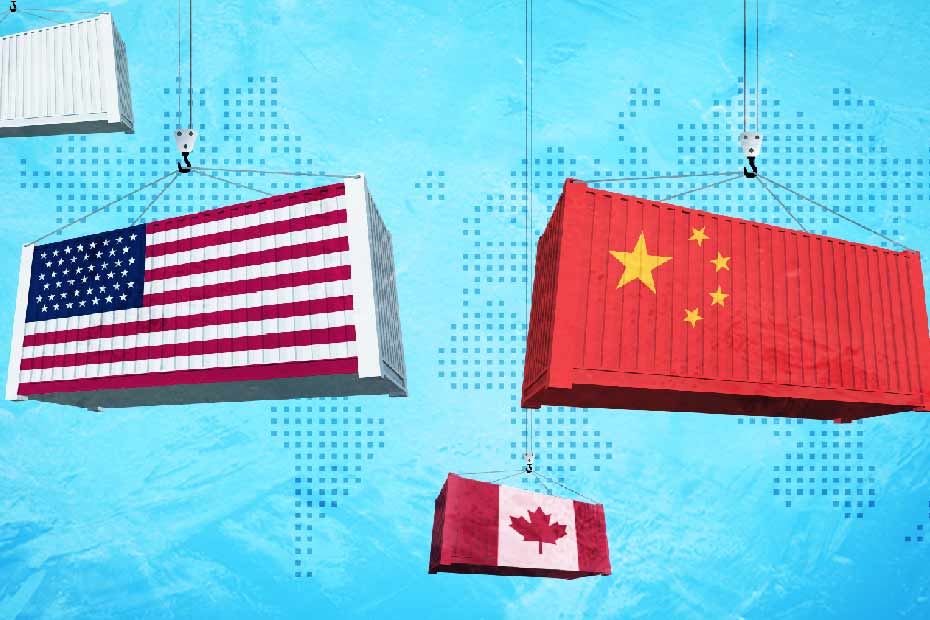Global Trade is Entering a New Era and Canada’s Exporters Need to Take Hold of it

Published April 6, 2021 • 3 Min Read
Pandemic-driven factory closures, shortages of masks and PPE, and port logjams have exposed dangerous weaknesses in global supply chains. For the U.S., Canada’s largest trading partner, it has set the stage for critical supply networks to be reengineered around new priorities: national security, labour rights, the environment and geopolitical issues. These reimagined supply lines are at the heart of a U.S. industrial strategy designed to “reshore” or return production to U.S. soil, reverse decades of job losses and vie with China for global leadership of the technologies of the future including electric vehicles, batteries and semiconductors.
For Canada they represent an opportunity to regain lost ground, according to Trading Places, a new report from RBC Economics and Thought Leadership. A new continental trade strategy that secures a foothold in emerging and reshaped American supply chains could re-establish Canadian exports as a key driver of economic growth. It could also help industries at the core of Canada’s export strength—auto manufacturing, energy, and metals and minerals, worth more than half of our exports or $227 billion in 2019—pivot to new growth opportunities in a greening economy. The payoff could be sizeable, helping Canada push toward an ambitious but reasonable target of $1 trillion in additional exports by 2030.
Success won’t be automatic. Other countries too, will vie for a role in the supply lines supporting the world’s largest economy. But Canada can draw on powerful advantages, including deep integration in U.S. auto manufacturing, a free trade pact with the U.S. and Mexico, expertise in clean tech and a natural resource endowment that includes every critical mineral used in the manufacture of EV batteries.
It will require a comprehensive review of existing trade, tax and regulatory policies to ensure the right mix is in place to capture more than a fair share of any reshaped manufacturing base. It will mean coordinating with other nations to ensure Canadian industrial policies are competitive. And it will mean making new investments in the skills training and strategic immigration essential to retaining higher value aspects of supply chains.
To compete for investment, Canada will also need to consider modern policy tools to support strategic goods like EVs and batteries, particularly as other countries offer incentives and subsidies. It will need to establish priority sectors for investment, build out its infrastructure, and develop more robust R&D and skills strategies. It will need to work closely with key international partners in Europe and the Indo-Pacific region to ensure its policies are competitive and aligned with like-minded trading partners.
And as new alliances and partnerships are formed, Canada must be careful not to alienate China, a major buyer of Canadian agriculture and natural resources. Continuing this trading relationship, while simultaneously seeking a significant role in a U.S. agenda designed to curtail Chinese economic power, may be difficult. Canada risks being caught in the middle.
Read the full Trading Places report from RBC Economics and Thought Leadership.
This article is intended as general information only and is not to be relied upon as constituting legal, financial or other professional advice. A professional advisor should be consulted regarding your specific situation. Information presented is believed to be factual and up-to-date but we do not guarantee its accuracy and it should not be regarded as a complete analysis of the subjects discussed. All expressions of opinion reflect the judgment of the authors as of the date of publication and are subject to change. No endorsement of any third parties or their advice, opinions, information, products or services is expressly given or implied by Royal Bank of Canada or any of its affiliates.
Share This Article





